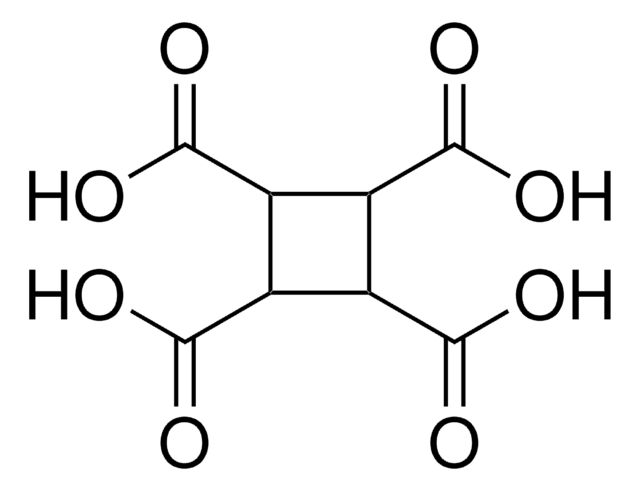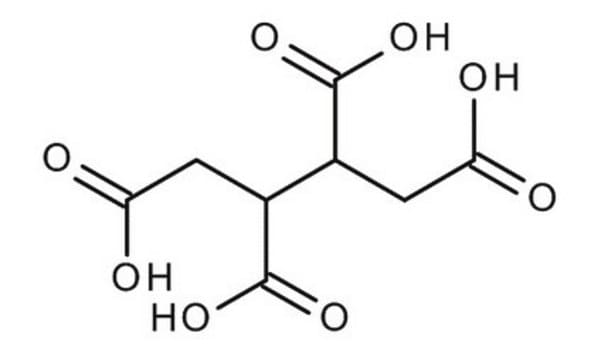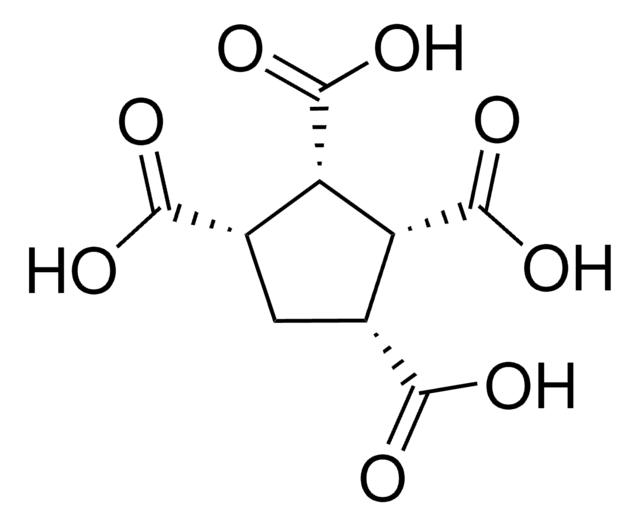257303
1,2,3,4-Butanetetracarboxylic acid
99%
About This Item
Produits recommandés
Pureté
99%
Forme
powder
Pf
195-197 °C (dec.) (lit.)
Chaîne SMILES
OC(=O)CC(C(CC(O)=O)C(O)=O)C(O)=O
InChI
1S/C8H10O8/c9-5(10)1-3(7(13)14)4(8(15)16)2-6(11)12/h3-4H,1-2H2,(H,9,10)(H,11,12)(H,13,14)(H,15,16)
Clé InChI
GGAUUQHSCNMCAU-UHFFFAOYSA-N
Vous recherchez des produits similaires ? Visite Guide de comparaison des produits
Description générale
Application
- To functionalize cotton fabric. BTCA-treated fabric shows improved anti-pilling, wrinkle resistance, and fire-retardant properties.
- To fabricate flexible, free-standing nanocellulose membranes. The cross-linking with BTCA improves water stability and ionic conductivity of membranes.
Mention d'avertissement
Warning
Mentions de danger
Conseils de prudence
Classification des risques
Acute Tox. 4 Oral - Eye Irrit. 2
Code de la classe de stockage
11 - Combustible Solids
Classe de danger pour l'eau (WGK)
WGK 3
Point d'éclair (°F)
Not applicable
Point d'éclair (°C)
Not applicable
Équipement de protection individuelle
dust mask type N95 (US), Eyeshields, Gloves
Certificats d'analyse (COA)
Recherchez un Certificats d'analyse (COA) en saisissant le numéro de lot du produit. Les numéros de lot figurent sur l'étiquette du produit après les mots "Lot" ou "Batch".
Déjà en possession de ce produit ?
Retrouvez la documentation relative aux produits que vous avez récemment achetés dans la Bibliothèque de documents.
Notre équipe de scientifiques dispose d'une expérience dans tous les secteurs de la recherche, notamment en sciences de la vie, science des matériaux, synthèse chimique, chromatographie, analyse et dans de nombreux autres domaines..
Contacter notre Service technique









